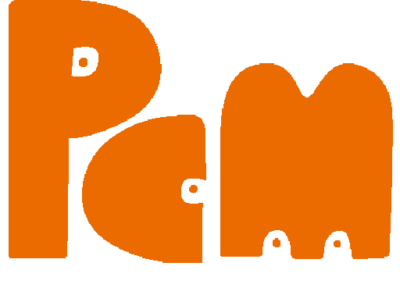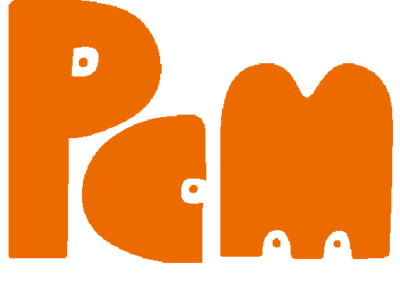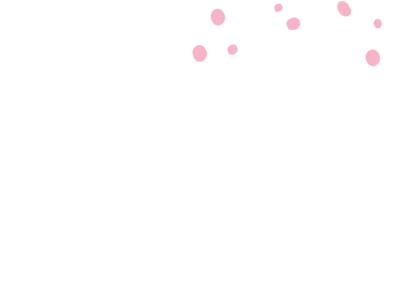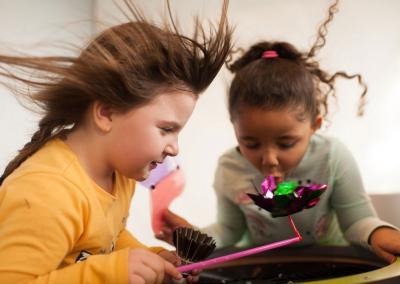Blast From the Past
(FOCUS: Grade 3, Grade 4, Grade 5, History & Humanities, Design Thinking)
Introduction: Time-travel back to ancient times and imagine what it was like to live in the past! How did ancient people engage with the world around them? What ideas and tools were important in ancient cultures?
In this lesson, students will prepare for a unit on ancient cultures by imagining themselves living in the past and creating objects that they think might have existed back then to make life easier. Students can then compare tools of the past to the tools we use today, and make inferences about the similarities and differences between societal needs over time.
Materials to Gather
The materials can be adapted based on availability, though some suggested materials are listed below: Classroom items:
- Crayola Air Dry clay (or similar sculpting putty)
- Pipe cleaners
- Straws
- Paper plates
- Dixie/Solo cups
- Construction paper (assorted colors)
- Crayons/markers/colored pencils
- Yarn or other string
- Safety scissors
- Glue sticks and/or liquid glue
- Scotch tape
- Staples
Recycled/household items:
- Empty toilet paper or paper towel rolls
- Newspaper
- Empty plastic water bottles
- Cardboard boxes (various sizes)
Set Up
- Desks/work surfaces cleared of other materials
- Desks arranged in collaborative groupings (e.g. tables of 3-4 student desks facing each other)
- Option to prepare one centralized materials station with all materials for students to come up and retrieve as needed, OR distribute an equal number materials per student table grouping to be shared among the group
Student’s Job
What do you think it was like to live in ancient times? (Option to specify the culture, e.g. ancient Greece/Rome/Egypt/Africa, based on the intended text pairing. Additionally, teacher can opt to hold a discussion/mini-lesson about the needs that various civilizations might have, then use this discussion to generate a list of possible objects). Use the provided materials to create an object that you think people might have used in their lives a very long time ago!
- Think about what it was probably like to live thousands of years ago. What sorts of jobs did people have? What activities did they do for fun?
- Consider this: What kinds of things did NOT exist that we use all the time today? What would they have to use instead?
- Pick a job or activity that you are interested in. Think of an item that could be used to do that job or activity. What would be necessary to do it? What would make it easier?
- Draw a sketch of your item. What is it used for? What materials should it be made out of?
- Look at the materials that are available to you. Which ones would work the best for building your item?
- Start building!
Further Challenges:
Create an object that you would want archaeologists to discover thousands of years from now. What kind of object would you make? What would it be used for? What would it teach people in the future about what our life is like today? You can research examples of artifacts to use as inspiration to get you started! Write a fictional narrative about a person who lived in ancient times. How did they use your object (from the original activity)? Incorporate examples of the object being used within your story. If you really want to challenge yourself, write a story from the point of view of the object!
Teacher’s Job
Align this lesson to the standards.
This lesson is connected to Rhode Island Grade Span Expectations (GSEs) Social Studies: Grades 5-8
SOCIAL STUDIES
Component 1: History is a chronicle of human activities, diverse people, and the societies they form.
- Learning Goal 1.a: Students demonstrate an understanding of how the past frames the present by identifying historical conditions and events that relate to contemporary issues
- Learning Goal 1.b: Students show understanding of change over time by establishing chronological order by working backward from some problem, issue, or event to explain its origins and development over time
Component 2: The study of history helps us understand the present and shape the future.
- Learning Goal 2.a: Students demonstrate an understanding of how the past frames the present by identifying historical conditions and events that relate to contemporary issues.
ENGINEERING
Component 1: Effective design through engineering and technology is the outcome of a problem-solving process involving the application of content knowledge, acquired skills, and creativity.
- Learning Goal: Students demonstrate an understanding of the attributes of a design process by:
- 1a. defining a problem that addresses a scenario with given criteria & constraint
- 1b. selecting an appropriate design solution for a given scenario or task
Component 2: Students demonstrate an understanding of effective design of products and systems by:
- Learning Goal 1.b: Given a process, with criteria & constraints, solve a real-world problem
- Learning Goal 2.b: Using materials provided to construct a working model for a given task
Connection to Previous Work
This lesson connects to a larger ELA unit on Ancient Realms, in which students will be asked to read both fiction and nonfiction texts about people and places from ancient Greece and Egypt, then describe in an extended writing piece the ways in which ancient cultures still influence our daily lives in the contemporary world. Cross-curricular connections can be made with Social Studies in order to build prior knowledge and/or extend learning to topics relating to daily life in those early civilizations.
Prepare/ Background Info
It may be helpful for students to have already been introduced to some background knowledge about ancient civilizations, as well as the concept of different tools and technology that have improved life throughout history. Here are some links to readings and videos that can aid in providing this prior knowledge: Primitive Technology (YouTube channel) Ancient Civilization Technology (collection of Newsela articles – informational text)
Effective Facilitation
If students are struggling to think of what life was like in ancient times, or to pick an object that might have been used back then, suggest that they think of a job someone in their life has today. e.g. Who is an important adult in your life? What do they do for their job? What kinds of tools do they need to be able to do their job? Do you think people had that kind of tool thousands of years ago? (If no, what else could they have used instead?)
Play to Notice (Learning Framework)
Teacher should observe the following play standards: Child-centered: The lesson supports children’s independence by letting them lead and feel empowered to make decisions (e.g what object to create, what materials to use, what the object would have been used for) Choice: The lesson is open-ended, there are different approaches and various solutions, as well as multiple entry points (e.g. students can create any object they want, without a particular teacher end-goal in mind) Challenge: The lesson offers various levels of challenge (e.g. optional extension activities, as well as varying objects students choose to create), and it provides children with opportunities to challenge themselves and take healthy risks. Active: The lesson provides opportunities for children to participate, communicate, create, and make decisions Social support: The lesson supports solitary, parallel, collaborative, multi-age, and multi- generational forms of play and exploration (e.g. students can choose to create an object independently or can collaborate with their peers if they wish) Familiar and unexpected: The lesson builds on children’s past experiences and makes connections to their lives outside of the classroom (e.g. students may wish to connect their created object with knowledge they have of life in the past/present, which relates to areas beyond the classroom) Make learning visible: The lesson encourages children to express their ideas and independently reflect (e.g. when brainstorming their ideas for objects to create, students have the opportunity to reflect on what life would have been like for people in the past as well as what people in the future will infer about our lives today)
Content Matter to Notice
This lesson, and the activities leading up to/following it, specifically address content standards relating to engineering and the engineering design process, as well as social studies concepts (history of ancient people, the influence of ancient societies on contemporary life, and the ways technology has evolved over time and its influence on industry) and literacy standards (comprehending informational text and narrative writing)
SEL to Notice
Casel Competencies: Self-Management
- Exhibiting self-discipline and self-motivation
Relationship Skills
- Practicing teamwork and collaborative problem-solving
- Resolving conflicts constructively





0 Comments